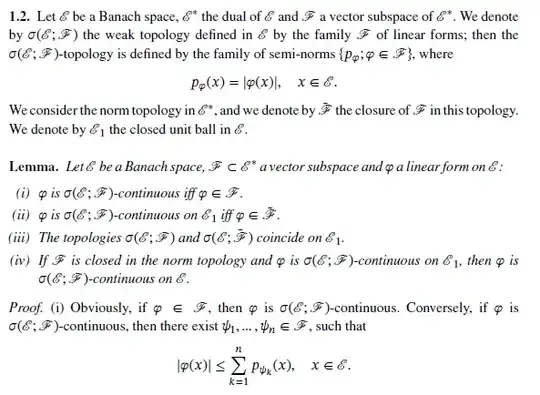Consider the following fragment from the book "Lectures on von Neumann algebras".
Why is the line $\varphi$ is $\sigma(\mathcal{E}, \mathcal{F})$-continuous $\implies$ there exist $\psi_1, \dots, \psi_n \in \mathcal{F}$ such that $|\varphi| \leq \sum_k p_{\psi_k}$ true? This is probably an easy consequence of the initial topology definition, but I can't see it.
